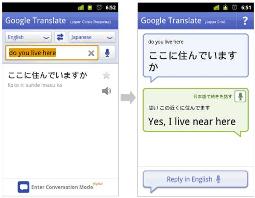
Imagine that with Augmented Reality glasses, maybe Apple AR Glasses when they arrive.

Imagine Translation with Augmented Reality Glasses Google Translate samples the color around the text and use it as a background for the translated English text. This is very convenient because if not, you have to deal with reading the English text alongside the Japanese and that would be terrible. You can see that what Google Translate does, is replacing the Japanese text with the English one. I can see almost a full translation of the ingredients and the title on the vegetable box. I can understand that 0% means for no cholesterol. You can see that I can understand what a specific sauce is. This leads to a flickery translation experience that is sometimes very hard to follow. Secondly, it’s updated in real-time, so as you move the camera, even a tiny bit, it refreshes the text. The first one is that translation word-per-word can produce some meaningless words. In AR translation, there are several issues. BUT, it is useable, and it’s better than nothing.Įven if I translate Japanese text to English using Google Translate, it’s not 100% accurate translation, far from it. Let’s say it like that, this real-time AR translation from Japanese to English is far from being perfect. There are many apps that can translate text from images, but this is a live Japanese translation in augmented reality! Japanese Translation Downsides I am an AR enthusiast, and I was so happy to discover this functionality. You just point the phone towards the Japapense label and it will translate the text from Japanese to your chosen language. The amazing thing is that Google Translate app (for Android and iOS), has a built-in augmented reality translation feature. What you are going to do, install a Japanese keyboard and try to type it, absolutely not.

Of course not, this would be a terrible idea.


 0 kommentar(er)
0 kommentar(er)
